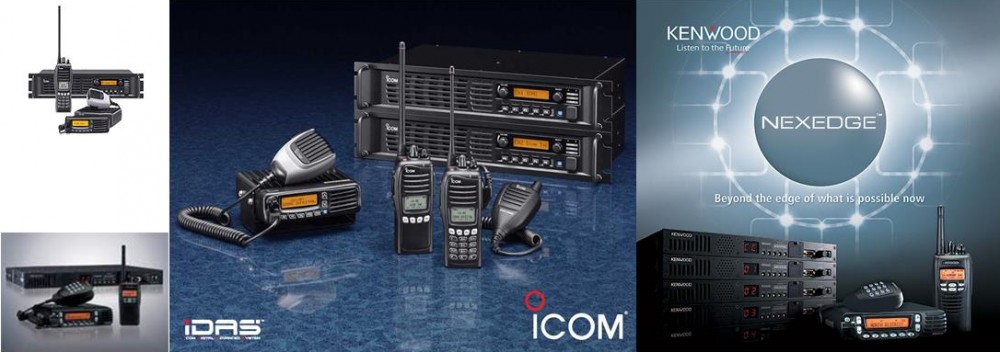As it relates to equipment that is needed to utilize this technology, I’ll try to give you the basics from both Major vendors. In either case, make sure you get the right *split*… for the Ham frequencies that you are going to utilize. I’m not going to go into the pros and cons of this technology, I’ll leave that to your investigation. Suffice it to say at the highest level, it supports both analog and digital on the same hardware, that part is fairly seamless. It will only support digital over the Internet connection, there is not way to deal with anything but the digital version when linked via the NDXN linking… Each repeater has a DB25 connector on the back which allows connection of other peripherals. In fact all of my repeaters also have AllStar Link connected to them so they can link in either Analog or Digital mode.
Icom – http://www.icomamerica.com/idas625/
– IC-FR5000/6000 repeater, these come in one of 2 flavors. either the model numbers listed which gets you a full rack size unit with a nice display and buttons and knobs, or the UR-FR5000/6000. The later is the module that is inside the rack case, it doesn’t have the display, buttons or knobs, but it will also save you about $500 over the price of the one with. There is no other differences, the same software, programming etc is utilized to make just the module work. These are very small, about the size of a hard cover book, but about 4-5″ thick. They both are 50W output at 50% duty cycle and 25W at 100%… with other levels of power setting available through programming. The 5000 being the VHF version and the 6000 being the UHF version.
– UC-FR5000 linking board – this is a small Linux based computer that is mounted inside the top of the repeater or module above. It has an Ethernet connection point and 2 other ports for simple connection to other modules, repeaters, radios, etc. (we won’t go into the later as we don’t use those)
– CF-FR5000MC Multi-Site Conventional Linking compact flash card. This includes the basic software that is utilized to get the Icom repeaters on the internet and at a basic level of connected to the WW NXDN network.
That’s it for Icom, if you shop hard, you can usually find the above for around $1000-$1100 all in.
Kenwood – http://nexedge.kenwood.com/
– NXR710/810 – You don’t need the 700 or 800 models, while almost 2X the price, they include no feature that would be appropriate for Amateur Radio. There is no module only version of the Kenwood that’s sold specifically that way. The 710 is the VHF version the 810 is the UHF version
– KTI-3 – this is the internet connection module for the Kenwoods, it has Ethernet and what they call N_SYNC ports, the latter being a form of RS-485 and are used for interconnection to other equipment similar to the Icoms.
There is no Compact flash card for the Kenwoods, that is included in the software functionality of the KTI-3.
Both of the above will require the Icom or Kenwood programming software and cable, these are easily found through other Ham groups that may be supporting the technology or through your favorite ham friendly dealer.
Note, all of this equipment is Part 90 certified, and as such, while it supports 25khz spacing and 5khz of deviation today, the Mandate in that space is going to require the vendors to limit it to 12.5khz spacing and 2.5khz deviation on January 1 in the US. We don’t know what implications that will have for analog usage going forward, but will keep you posted as we learn that.

Alan, with regards to the Part 90 radios going forward, there will be issues for hams that want to also make use of their radios on wide FM ham repeaters. The recently announced F3261/4261 do NOT have wide FM emission designators, unlike the 3161/4161. In talking with hams that are doing DMR, they are reporting a similar situation with newly announced radios no longer supporting the wider bandwidth, but existing radios continuing to do so.
BTW, I see that the Raspberry Pi is not available for now from regular sources and the ebay clowns are now offering it at a steep markup!!
John
N1OTY
All the better for us hams to Narrow Band 🙂
I run both an old Yaesu 7900 for all my ham wide band, and my nxdn just for nxdn.
John, yes, I’m very aware of that issue… I working with Kenwood directly to hopefully come up with a solution there… Paul in Florida is working with Icom for the same. The issue will be the programming software, not the firmware, post 1/1, it may require CA or EU software to program any changes…. But we’ll figure it out… Thanks for the note, sure do appreciate it.